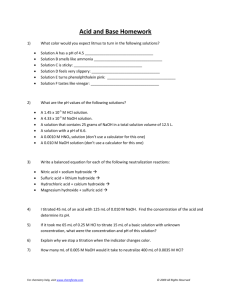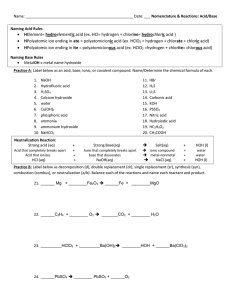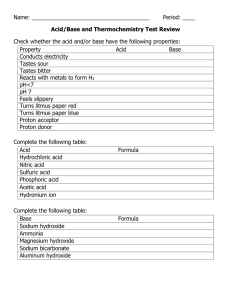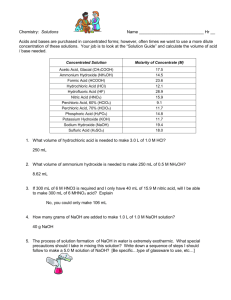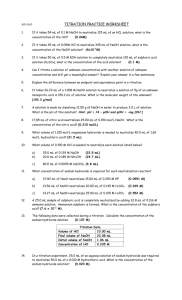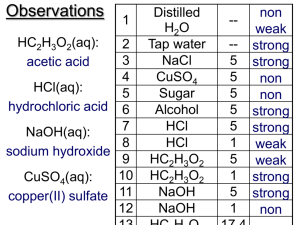AP Chemistry: Solution Stoichiometry Problem Set
advertisement
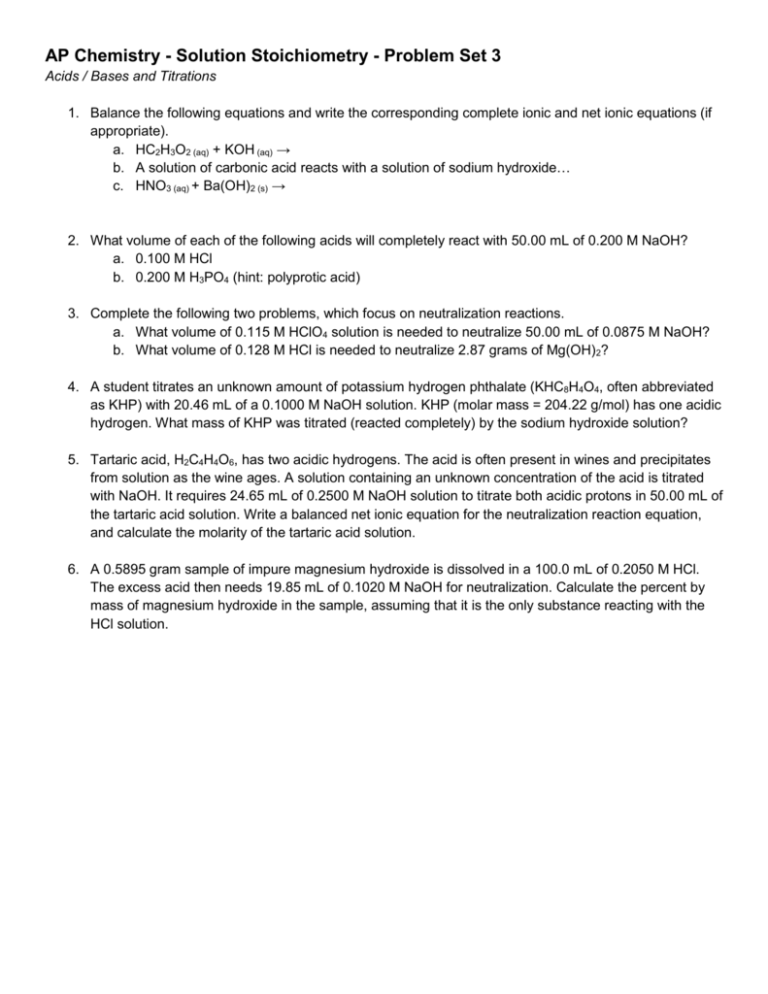
AP Chemistry - Solution Stoichiometry - Problem Set 3 Acids / Bases and Titrations 1. Balance the following equations and write the corresponding complete ionic and net ionic equations (if appropriate). a. HC2H3O2 (aq) + KOH (aq) → b. A solution of carbonic acid reacts with a solution of sodium hydroxide… c. HNO3 (aq) + Ba(OH)2 (s) → 2. What volume of each of the following acids will completely react with 50.00 mL of 0.200 M NaOH? a. 0.100 M HCl b. 0.200 M H3PO4 (hint: polyprotic acid) 3. Complete the following two problems, which focus on neutralization reactions. a. What volume of 0.115 M HClO4 solution is needed to neutralize 50.00 mL of 0.0875 M NaOH? b. What volume of 0.128 M HCl is needed to neutralize 2.87 grams of Mg(OH) 2? 4. A student titrates an unknown amount of potassium hydrogen phthalate (KHC8H4O4, often abbreviated as KHP) with 20.46 mL of a 0.1000 M NaOH solution. KHP (molar mass = 204.22 g/mol) has one acidic hydrogen. What mass of KHP was titrated (reacted completely) by the sodium hydroxide solution? 5. Tartaric acid, H2C4H4O6, has two acidic hydrogens. The acid is often present in wines and precipitates from solution as the wine ages. A solution containing an unknown concentration of the acid is titrated with NaOH. It requires 24.65 mL of 0.2500 M NaOH solution to titrate both acidic protons in 50.00 mL of the tartaric acid solution. Write a balanced net ionic equation for the neutralization reaction equation, and calculate the molarity of the tartaric acid solution. 6. A 0.5895 gram sample of impure magnesium hydroxide is dissolved in a 100.0 mL of 0.2050 M HCl. The excess acid then needs 19.85 mL of 0.1020 M NaOH for neutralization. Calculate the percent by mass of magnesium hydroxide in the sample, assuming that it is the only substance reacting with the HCl solution.
